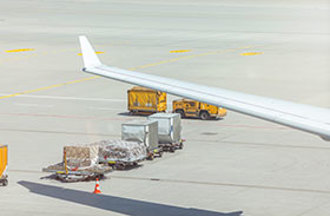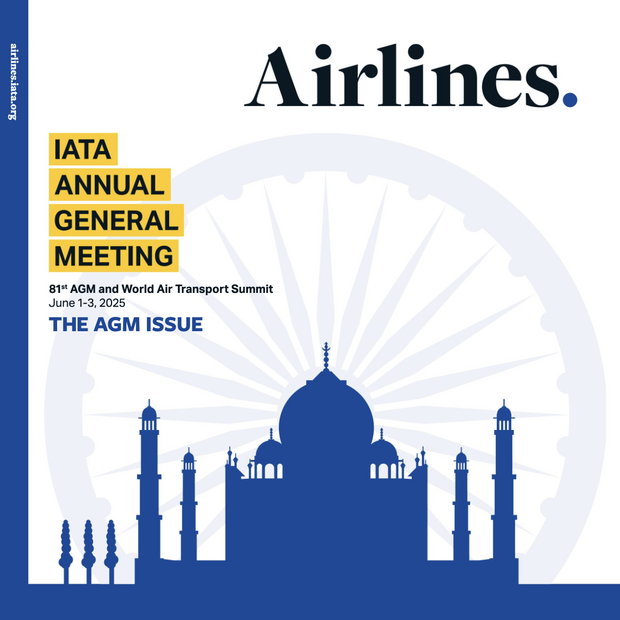
Translation:
国际航协:全球航空货运需求受俄乌冲突和奥密克戎冲击 (pdf)
Geneva - The International Air Transport Association (IATA) released March 2022 data for global air cargo markets showing a drop in demand. The effects of Omicron in Asia, the Russia – Ukraine war and a challenging operating backdrop contributed to the decline.
Note: We returned to year-on-year traffic comparisons, instead of comparisons with the 2019 period, unless otherwise noted. Cargo demand is tracking below pre-COVID-19 levels, and capacity remains constrained.
- Global demand, measured in cargo tonne-kilometers (CTKs*), fell 5.2% compared to March 2021 (-5.4% for international operations).
- Capacity was 1.2% above March 2021 (+2.6% for international operations). While this is in positive territory, it is a significant decline from the 11.2% year-on-year increase in February. Asia and Europe experienced the largest falls in capacity.
- Several factors in the operating environment should be noted:
- The war in Ukraine led to a fall in cargo capacity used to serve Europe as several airlines based in Russia and Ukraine were key cargo players. Sanctions against Russia led to disruptions in manufacturing. And rising oil prices are having a negative economic impact, including raising costs for shipping.
- New export orders, a leading indicator of cargo demand, are now shrinking in all markets except the US. The Purchasing Managers’ Index (PMI) indicator tracking global new export orders fell to 48.2 in March. This was the lowest since July 2020.
- Global goods trade has continued to decline in 2022, with China’s economy growing more slowly because of COVID-19 related lockdowns (among other factors); and supply chain disruptions amplified by the war in Ukraine.
- General consumer price inflation for the G7 countries was at 6.3% year-on-year in February 2022, the highest since 1982.
“Air cargo markets mirror global economic developments. In March, the trading environment took a turn for the worse. The combination of war in Ukraine and the spread of the Omicron variant in Asia have led to rising energy costs, exacerbated supply chain disruptions, and fed inflationary pressure. As a result, compared to a year ago, there are fewer goods being shipped—including by air. Peace in Ukraine and a shift in China’s COVID-19 policy would do much to ease the industry’s headwinds. As neither appears likely in the short-term, we can expect growing challenges for air cargo just as passenger markets are accelerating their recovery,” said Willie Walsh, IATA’s Director General.
| Air Cargo Market Detail-march 2022 | World Share (% year on year) | CTK | ACTK | CLF(%-PT)2 | CLF(LEVEL)3 |
|---|---|---|---|---|---|
| Total Market | 100% | -5.2% | 1.2% | -3.7% | 54.9% |
| Africa | 1.9% | 3.1% | 8.7% | -2.7% | 49.4% |
| Asia Pacific | 32.5% | -5.1% | -6.4% | 0.9% | 63.8% |
| Europe | 22.9% | -11.1% | -4.9% | -4.7% | 67.1% |
| Latin America | 2.2% | 22.1% | 34.9% | -4.7% | 44.8% |
| Middle East | 13.4% | -9.7% | 5.3% | -8.7% | 52.6% |
| North America | 27.2% | -0.7% | 6.7% | -3.3% | 44.2% |
1) % of industry RPKs in 2020 2) Change in load factor vs. the same month in 2019 3) Load Factor Level
March Regional Performance
Asia-Pacific airlines saw their air cargo volumes decrease by 5.1% in March 2022 compared to the same month in 2021. Available capacity in the region fell 6.4% compared to March 2021, the largest drop of all regions. The zero-COVID policy in mainland China and Hong Kong is impacting performance.
North American carriers posted a 0.7% decrease in cargo volumes in March 2022 compared to March 2021. Demand in the Asia-North America market declined significantly, with seasonally adjusted volumes falling by 9.2% in March. Capacity was up 6.7% compared to March 2021.
European carriers saw a 11.1% decrease in cargo volumes in March 2022 compared to the same month in 2021. This was the weakest of all regions. The Within Europe market fell significantly, down 19.7% month on month. This is attributable to the war in Ukraine. Labor shortages and lower manufacturing activity in Asia due to Omicron also affected demand. Capacity fell 4.9% in March 2022 compared to March 2021.
Middle Eastern carriers experienced a 9.7% year-on-year decrease in cargo volumes in March. Significant benefits from traffic being redirected to avoid flying over Russia failed to materialize. This is likely due to subdued demand overall. Capacity was up 5.3% compared to March 2021.
Latin American carriers reported an increase of 22.1% in cargo volumes in March 2022 compared to the 2021 period. This was the strongest performance of all regions. Some of the largest airlines in the region are benefitting from the end of bankruptcy procedures. Capacity in March was up 34.9% compared to the same month in 2021.
African airlines saw cargo volumes increase by 3.1% in March 2022 compared to March 2021. Capacity was 8.7% above March 2021 levels.
Read the latest cargo analysis (pdf)
For more information, please contact:
Corporate Communications
Tel: +41 22 770 2967
Email: corpcomms@iata.org
Notes for Editors:
- IATA (International Air Transport Association) represents some 350 airlines comprising over 80% of global air traffic.
- You can follow us on X for announcements, policy positions, and other useful industry information.
- Fly Net Zero
- * Please note that as of January 2020 onwards, we have clarified the terminology of the Industry and Regional series from ‘Freight’ to ‘Cargo’, the corresponding metrics being FTK (changed to ‘CTK’), AFTK (changed to ‘ACTK’), and FLF (changed to ‘CLF’), in order to reflect that the series have been consisting of Cargo (Freight plus Mail) rather than Freight only. The data series themselves have not been changed.
- IATA (International Air Transport Association) represents some 290 airlines comprising 83% of global air traffic.
- You can follow us at twitter.com/iata for announcements, policy positions, and other useful industry information.
- Explanation of measurement terms:
- CTK: cargo tonne-kilometers measures actual cargo traffic
- ACTK: available cargo tonne-kilometers measures available total cargo capacity
- CLF: cargo load factor is % of ACTKs used
- IATA statistics cover international and domestic scheduled air cargo for IATA member and non-member airlines.
- Total cargo traffic market share by region of carriers in terms of CTK is: Asia-Pacific 32.4%, Europe 22.9%, North America 27.2%, Middle East 13.4%, Latin America 2.2%, and Africa 1.9%.

